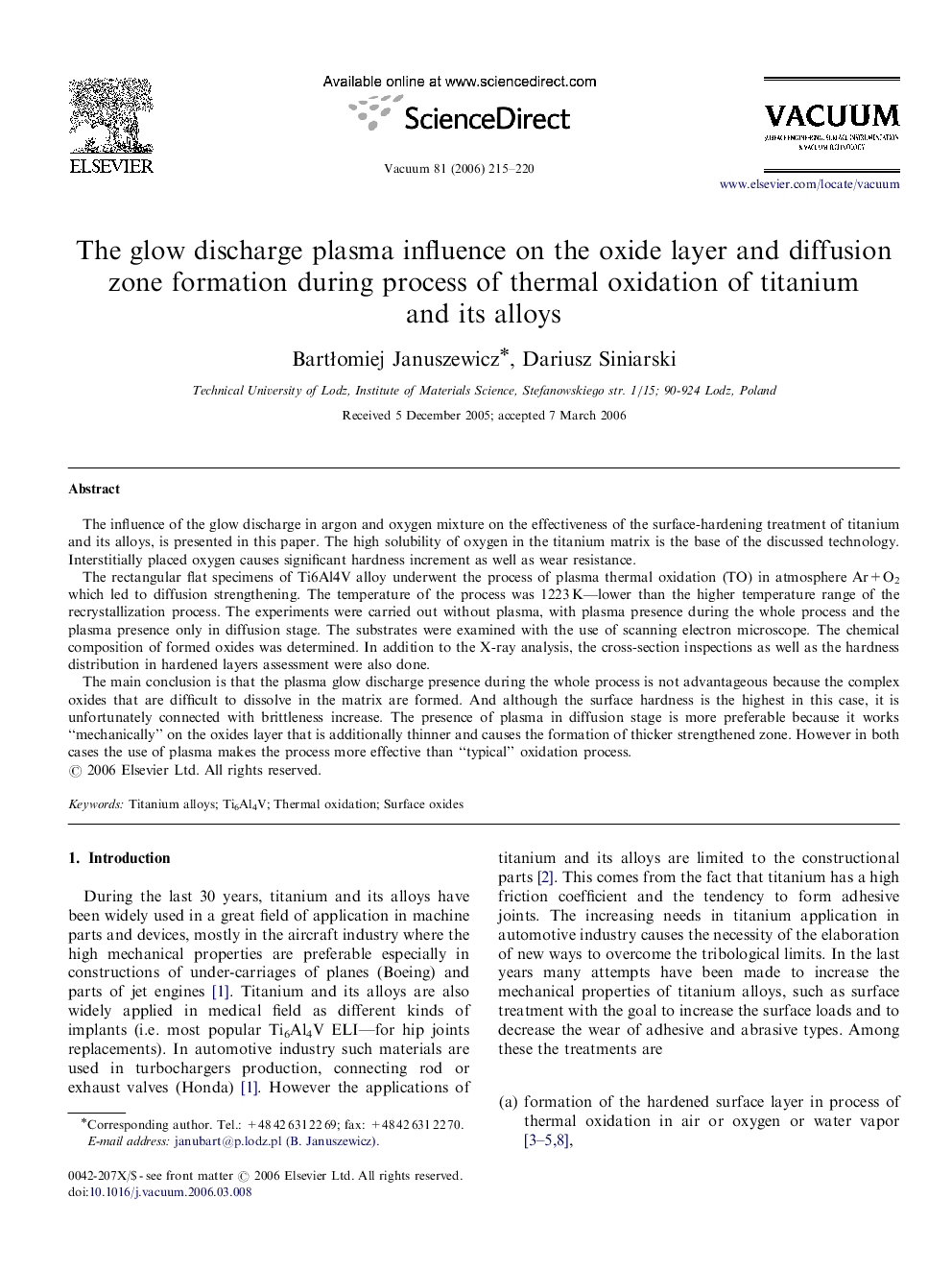| Article ID | Journal | Published Year | Pages | File Type |
|---|---|---|---|---|
| 1689961 | Vacuum | 2006 | 6 Pages |
The influence of the glow discharge in argon and oxygen mixture on the effectiveness of the surface-hardening treatment of titanium and its alloys, is presented in this paper. The high solubility of oxygen in the titanium matrix is the base of the discussed technology. Interstitially placed oxygen causes significant hardness increment as well as wear resistance.The rectangular flat specimens of Ti6Al4V alloy underwent the process of plasma thermal oxidation (TO) in atmosphere Ar+O2 which led to diffusion strengthening. The temperature of the process was 1223 K—lower than the higher temperature range of the recrystallization process. The experiments were carried out without plasma, with plasma presence during the whole process and the plasma presence only in diffusion stage. The substrates were examined with the use of scanning electron microscope. The chemical composition of formed oxides was determined. In addition to the X-ray analysis, the cross-section inspections as well as the hardness distribution in hardened layers assessment were also done.The main conclusion is that the plasma glow discharge presence during the whole process is not advantageous because the complex oxides that are difficult to dissolve in the matrix are formed. And although the surface hardness is the highest in this case, it is unfortunately connected with brittleness increase. The presence of plasma in diffusion stage is more preferable because it works “mechanically” on the oxides layer that is additionally thinner and causes the formation of thicker strengthened zone. However in both cases the use of plasma makes the process more effective than “typical” oxidation process.
